Dixieland Ramblers
19 July 2014 Howard Wear
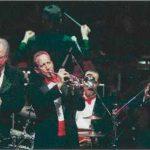
Formed in 1957 by clarinetist Mike Bennett and drummer Tom Stevenson, this band combines New Orleans jazz, swing and mainstream jazz styles. The group has released four albums and performs their tunes on piano, bass, drums, clarinet, trumpet and trombone.
Sinfonia of London
19 July 2014 Howard Wear
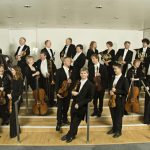
The Sinfonia of London is the name of two distinct session orchestras based in London, England. The original ensemble of this name was founded in 1955 by Gordon Walker, an eminent flautist of his time, specifically for the recording of film music. The orchestra appeared on the musical credits of many British and American films of the 1950s and 60s.
Gerald Wilson
18 July 2014 Howard Wear
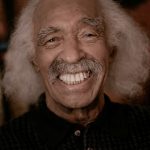
For more than fifty years, Gerald Wilson has been recognized as one of the premiere composers, arrangers and band leaders in modern jazz. Now in his 79th year, the elegant and gracious master continues not only to create brilliant, sophisticated music, but to reap ever greater honors for his timeless contributions to American culture. The perennially humble Wilson has garnered his share of accolades, including five Grammy nominations, top Big Band and Composer/Arranger honors in the Downbeat International Critics Poll, the Paul Robeson Award, the NEA American Jazz Masters Fellowship, and two 1997 American Jazz Awards for Best Arranger and Best Big Band. In 1996, Wilson received the rare honor of having his life’s work archived by the Library of Congress. As a composer and arranger, Wilson continues to produce prolifically. His latest CD from MAMA Records, the double Grammy-nominated Theme for Monterey (1999 Best Large Jazz Ensemble Performance; Best Original Composition: “Romance”), chronicles three recent works. The album’s namesake is a large-scale piece commissioned by the Monterey Jazz Festival last year, celebrating the Festival’s 40th anniversary. This set of five variations on a mesmerizing 40-bar theme, clocks in at nearly 45 minutes and is a testament to the composer’s sophistication and mastery. Wilson, who has enjoyed a special relationship with the world-renowned annual jazz event, also wrote and performed featured commissions for its 20th and 25th anniversary, as well as making several other appearances there during its 40-year history. The other pieces, his rendition of Gershwin’s “Summertime” and Parker/Gillespie’s “Anthropology” (based on Gershwin’s “I Got Rhythm” changes), both commissioned by the Ira and Leonore Gershwin Foundation, were premiered at the Library of Congress in 1996. “In my recent works,” stresses Wilson, “I’ve stayed away from some of the symphonic devices I’ve used elsewhere. I want this music to swing in any tempo, even the ballads. After all, this is jazz, and everything must swing!” Although not a household name, Wilson’s talent is legendary among jazz insiders. His groundbreaking compositions, intricate arrangements and immediately recognizable sound put him in a league of his own. In his prolific six-decade career as composer and arranger, Wilson has been behind some of the greatest names in jazz, including Duke Ellington, Count Basie, Ray Charles, Ella Fitzgerald, Benny Carter, Nancy Wilson, and Bobby Darin. Beyond his jazz accomplishments, Wilson’s symphonic compositions have been performed by the Los Angeles Philharmonic under the direction of Zubin Mehta. He even scored a top 40 pop hit with El Chicano’s 1970 version of his “Viva Tirado,” a song that has been recorded in at least 18 different versions, including a hip hop rendition by Latino rapper Kid Frost. Wilson began his life in jazz in 1937, when he joined the musician’s union and started playing professionally. Two years later, at the age of 21, he was invited to join the highly popular Jimmie Lunceford band in New York City. His impact was immediate, contributing such powerful material as “Hi Spook” and “Yard Dog Mazurka” to the Lunceford repertoire. After four years with Lunceford and a stint in the U.S. Navy during World War II, Wilson settled in Los Angeles, playing trumpet and writing for Benny Carter and Les Hite. In 1944 he organized the first Gerald Wilson Jazz Orchestra, featuring trombonist Melba Liston and trumpeter Snooky Young among its members. Twice touring the country, Wilson’s big band made its mark in New York City, receiving rave reviews playing the Apollo Theater between bookings of the Ellington and Lunceford bands, and in Chicago, landing a ten-week engagement at the Regal Theater and hiring a young Joe Williams as the band’s vocalist there. Just as his orchestra was reaching a peak of popularity and commercial success in 1947, Wilson dissolved the band. “All of a sudden I was in New York city with my band. I was very successful,” he remembers. “They were booking me everywhere and I had contracts all over the place, and I realized that, ‘Hey, this wasn’t what I wanted; there’s still so much I’ve got to learn.’ The only way I could was to actually stop and really study. My booking agent was ready to kill me.” Back in Los Angeles, Wilson devoted himself to refining his knowledge of harmony and orchestration. “It wasn’t that I dropped off the scene,” he says, “I was still playing and recording, but I was into that mode of studying.” Indeed, in 1948 he went on the road as a member of Count Basie’s big band, a learning experience itself in what Wilson calls “the cradle of swing.” In 1949, he joined his good friend and fellow trumpeter Dizzy Gillespie’s group. “He wouldn’t come to Los Angeles without coming to my home,” Wilson recalls of the bebop pioneer. In Dizzy’s band, Wilson helped shape the repertoire with such progressive arrangements as “Out of this World” and his own composition “Couldn’t Love, Couldn’t Cry,” which Wilson remembers as “a very advanced number; one of the works I’m most proud of writing.” From the late 1940s through the ’50s, Wilson was one of the most active arrangers and orchestrators in jazz and popular music. In addition to providing musical settings for Sarah Vaughan, Ray Charles, Julie London, Bobby Darin, Carmen McRae and many others, he developed a close working relationship with Duke Ellington. That “little association,” as Wilson calls it, lasted until Ellington’s death in 1974. Wilson also scored for motion pictures (Otto Preminger’s Anatomy of a Murder) and television (ABC’s variety program, The Redd Foxx Show, serving also as the show’s conductor and music director), achieving a balance of creative fulfillment and commercial success. As much as Wilson enjoyed his involvement in popular music, there was never any doubt about his first love. “I’m always looking to get something new going. Because jazz is a creative art form and if you start using the same rhythmic patterns and harmonies over again, you’re not creating. Fortunately,” Wilson explains, “I’ve never really had a problem getting my creative work heard; it always seemed something would open up for me.” He began his recording career in 1945 with the Excelsior and Black & White labels moving to Federal in the 1950s. Later he inaugurated a long, rewarding relationship with Pacific Jazz in 1961, which produced such critically acclaimed albums as You Better Believe It!, Moment of Truth, Portraits, On Stage and The Golden Sword. In 1969, pursuing his commitment to creative expansion, Wilson intensified his study of classical music, plunging into the scores of Stravinsky, Debussy, Katchaturian, Ravel, Villa Lobos, and Rodrigo. “I found a lot of things that have helped me so much with my jazz scoring,” he says. Already a master of complex voicings-his smooth uses of eight-part harmony and polytonality were always far ahead of their time-Wilson composed an extended work for the Los Angeles Philharmonic, titled “5/21/72,” performed under the direction of Zubin Mehta. This lead to further commissions in the classical form, including four arrangements for the Philharmonic and the Joel Westmorland 200-voice interdenominational choir. One of the most generous of artists, Wilson has continually sought ways to share his knowledge and passion, from hosting a daily jazz program on L.A.’s KBCA in the early 1970s to teaching jazz history for 13 years at California State University Northridge, six years at Cal State L.A., and for the past six years at UCLA. He is currently completing a book on jazz harmony. “It helps keep me alive,” he explains, “because jazz is such a chain of evolution. I just try to be a person worthy of being a part of this great art form.” In the 1990s, Wilson began recording with MAMA Records, while remaining at the forefront of big band jazz with as busy a schedule as ever. He calls State Street Sweet, his 1995 MAMA CD nominated for a Grammy as Best Large Ensemble Jazz Performance, “one of the best I’ve ever made.” His 1996 MAMA album, Suite Memories-Reflections on a Jazz Journey, is a chronicle of Wilson’s life in jazz. In a series of candid interviews, Wilson recalls his experiences starting from the heyday of jazz in the ’30s and ’40s to today. In recounting his associations with other jazz greats throughout the years, Wilson typically deflects credit and compliments to others as he quietly goes in search of yet another peak to scale. A tireless and creatively inexhaustible artist, Wilson rarely takes time to bask in the limelight that he shares with the other giants of jazz. Instead, with genuine humility, he says, “I’ve given to jazz the best that I have.” And, coming from Gerald Wilson, that will always be some of the best there is in modern jazz.
John Shirley-Quirk
18 July 2014 Darby
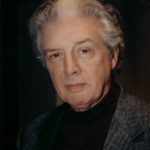
John Shirley-Quirk, was a British chemistry teacher who almost by accident became a world-renowned bass-baritone, performing at the Metropolitan Opera and became known as an interpreter of Benjamin Britten.
Wade Mikkola
18 July 2014 Darby
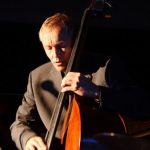
The sound of the Hammond B-3 organ, and more specifically the way that sound was sculpted into bluesy expressiveness by jazz artists, had a strong impact on the rock music that took the world by storm in the 1960s. A Hammond organ was present on stage at Woodstock, and saw use by groups ranging from the Grateful Dead and Janis Joplin, to Ten Years After, Santana and Sly and the Family Stone. Rock recordings by Booker T and the MGs, the Young Rascals, the Zombies, Blood Sweat and Tears, Emerson Lake and Palmer, and the Allman Brothers to name just a few, testify to the influence the jazz B-3 organ had on the musical stylings of classic rock. And that influence has permeated into the pop music of today in groups almost too numerous to mention.
John Mack
18 July 2014 Darby
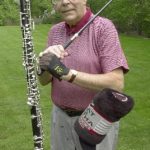
John Mack, spent 36 years as principal oboist with the prestigious Cleveland Orchestra and was regarded as the dean of American oboists.
John Stevens
18 July 2014 Darby

John Stevens (b. 1951) is Professor of Tuba and Euphonium at the University of Wisconsin-Madison. He is also a member of the Wisconsin Brass Quintet, a UW-Madison faculty ensemble-in residence. Professor Stevens has enjoyed a distinguished career as a teacher, orchestral, chamber music, solo and jazz performer and recording artist, composer/arranger, conductor and administrator. Following the completion of degrees in Tuba Performance at the Eastman School of Music (BM, 1973) and Yale University (MM, 1975), he was a free lance performer based in New York City for many years. He performed with every major orchestra in New York, was a member of the New York Tuba Quartet and many other chamber groups, principal tubist in the Aspen Festival Orchestra, toured and recorded with a wide variety of groups including Chuck Mangione, the American Brass Quintet and the San Francisco Ballet, and was the tuba soloist in the original Broadway production of BARNUM. He has released two solo recordings; an LP of his own compositions titled POWER (Mark Records, 1985) and a CD titled REVERIE (Summit Records, 2006). Stevens was on the faculty of the University of Miami (FL) School of Music for four years, while also performing as principal tubist with the Philharmonic Orchestra of Florida and the Miami Opera. He joined the UW-Madison faculty in 1985 and, in addition to his other duties, was the Director of the School of Music from 1991 to 1996 and 2011 to 2013.
Don Hales
18 July 2014 Darby

Don grew up in Toledo, Ohio, in a neighborhood of mixed race and culture where he heard Mexican guitarists and musicians from Appalachia. Beginning on an eight dollar Kay given to him on his 13th birthday, he taught himself to play guitar emulating music from the radio and from neighborhood porches. He entered and won a national contest at age 19 sponsored at the Nashville Ryman Auditorium by the honorable Judge George D. Hayes, ‘the solemn old judge’ who was the editor of Picking and Singing News published in Nashville. He came to Columbus touring with a rock band in 1958 where he joined the Rusty Bryant Band and worked along side singer Nancy Wilson.
Eric Ewazen
18 July 2014 Darby
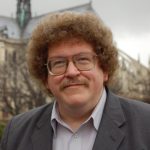
Eric Ewazen was born in 1954 in Cleveland, Ohio. Receiving a B.M. At the Eastman School of Music, and M.M. and D.M.A. degrees from The Juilliard School, his teachers include Milton Babbitt, Samuel Adler, Warren Benson, Joseph Schwantner and Gunther Schuller. He is a recipient of numerous composition awards and prizes. His works have been commissioned and performed by many soloists, chamber ensembles and orchestras in the U.S. and overseas. His works are recorded on Summit Records, d’Note Records, CRS Records, New World, Clique Track, Helicon, Hyperion, Cala, Albany and Emi Classics. Two of his solo CD’s featuring his chamber music are available on Well-Tempered Productions. Three additional solo CD’s, one featuring his orchestral music, another his music for low brass instruments, and a third, his music for string orchestra, are available on Albany Records. A sixth solo Cd of his music for percussion is available on Resonator Records. New World Records has released his concerto for brass quintet, “Shadowcatcher” with the American Brass Quintet and The Juilliard Wind Ensemble, conducted by Mark Gould of the Metropolitan Opera Orchestra. Individual works of Eric Ewazen have recently been released by the Ahn Trio, Julie Giacobassi of the San Francisco Symphony, Charles Vernon of the Chicago Symphony, Koichiro Yamamoto of the Metropolitan Opera Orchestra, Ronald Barron of the Boston Symphony, Doug Yeo of the Boston Symphony, Steve Witser of the Cleveland Orchestra, Joe Alessi and Philip Smith of the New York Philharmonic, the Horn Section of the New York Philharmonic, the Summit Brass Ensemble and the American Brass Quintet. His music is published by Southern Music Company, International Trombone Association Manuscript Press, Keyboard Publications, Manduca Music, Encore Music, Triplo Music, and Brass Ring Editions. Recent works include “Legacy” commissioned for the Bi-Centennial of West Point and performed by the USMA Band in Carnegie Hall and “Flight”, commissioned by the USAF Heritage of America Band at Langley AFB, VA, celebrating the 100th anniversary of powered flight. Recent premieres of his Orchestral and Wind Ensemble works have been given by the Charleston (SC) Symphony, West Virginia Symphony, Orquesta Sinfonica de Tenerife in Spain, Orquesta Sinfonica Carlos Chavez in Mexico City, Orchestre de la Garde Republicaine in Paris, the Jeju Music Festival Wind Ensemble in Korea and the Moment Musicale Orchestra of Taiwan. Recent Wind ensemble premieres include his Bassoon Concerto for the University of Florida, a Euphonium Concerto (for Robert Grechesky and the Butler University Wind Ensemble), “Visions of Light” for Joseph Alessi and the Indiana University Wind Ensemble. He was also commissioned to write a Trumpet Concerto, “Danzante”, for Allen Vizzutti by CBDNA which was premiered in Reno, NV in March, 2004 by the Intercollegiate Wind Ensemble. In January “Southern Landscapes” was premiered by the University of Georgia Wind Ensemble at the GMEA in Savannah. Orchestral performances of Mr. Ewazen’s music have recently been given by the Juilliard Symphony, Stow Chamber Orchestra (OH), Flower Mound Chamber Orchestra (TX), Birmingham (UK) Philharmonic, Illinois Symphony, Israel Symphony Orchestra Rishon Le’Zion, Honolulu Symphony, Mankato (MN) Symphony and the Everett (WA) Symphony. He has been a guest at almost 100 Universities and colleges throughout the world in recent years including, Curtis, Eastman, Peabody, Indiana U., UCLA, U. of Texas, U. of Hawaii, Birmingham (UK) Conservatory, the Conservatory of Santa Cruz (Spain) and Boston Conservatory. During the past season, he has been a guest at Appalachian State U., Tenn. Tech. U., Murray State, U. of MI, Emory University, Laval University in Quebec, U. of GA, U. of Washington in Seattle, Rutgers, Butler U., University of Northern Iowa, Brevard College, U. of MI and Cal. Poly Tech. Also during the past season, his music has been performed by the Orchestre National de Lille in France, the Milano Classica Sinfonica in Italy, the Brisbane Philharmonic in Australia, South Arkansas Symphony, Stow Chamber Orchestra, the Midland-Odessa Symphony, and in June he will be a guest at the 2005 International Trumpet Guild Festival, held at Mahidol University in Bangkok, Thailand, where his Rhapsody for trumpets and orchestra will be premiered by the Bangkok Philharmonic. In July he will be a guest at the WASBE (World Association of Symphonic Bands and Ensembles) in Singapore, where his music will be performed by the University of Florida. During the 2005-2006 season, the Alabama Symphony will be premiering a song cycle for Soprano and Orchestra, the U. of NC-Pembroke will be premiering a new work for chorus and wind ensemble, and there will be concerts of his music in the Loire Valley in France in April, 2006. He has been lecturer for the New York Philharmonic’s Musical Encounters Series, Vice-President of the League of Composers–International Society of Contemporary Music, and Composer-In-Residence with the Orchestra of St. Luke’s in New York City. He has been a faculty member at Juilliard since 1980.
Rafael Mendez
18 July 2014 Darby
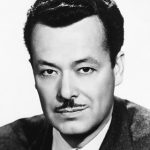
Rafael Méndez was born on March 26, 1906 in Jiquilpan, Mexico. His musical training began when he was five, when his father needed a trumpet player for the orchestra comprised of family members. The Méndez orchestra was a popular performing group and appeared regularly at festivals and community gatherings. Rafael loved the trumpet and actually practiced more that his father allowed.
New York Staff Band
18 July 2014 Darby
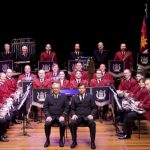
The New York Staff Band represents the finest in Christian brass band performance. Holding the distinction of being the first ‘staff band’ in Salvation Army [SA] music history, the NYSB meets the challenge of maintaining the highest standards of musical practice and Christian ministry expected of such a model group. When the band released its first 33-rpm ‘long play’ [LP] back in 1957 under Staff Bandmaster Richard Holz, it was heralded as ‘America’s Foremost Brass Band.’ The liner notes stated boldly: “From the ‘greatest city in the world’ comes one of the greatest bands of the world. The description of the band by a leading New York music critic over 70 years ago–“amateur musicians who play like professionals”–can easily be underscored and endorsed in the second decade of the 21st century. The NYSB has been and continues to be a trailblazer in SA and brass band music making.
Ohlone Wind Orchestra
18 July 2014 Darby
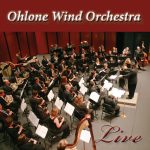
Based at Ohlone College in Fremont, California, the Ohlone Wind Orchestra has performed at the American Bandmaster’s National Convention, the Fresno State Wind Festival, and the CMEA Winter Conference, and was invited to play at the 2008 Winter Olympics in Beijing. The OWO has also recorded several highly acclaimed disks on the Johnson Digital Audio label.


